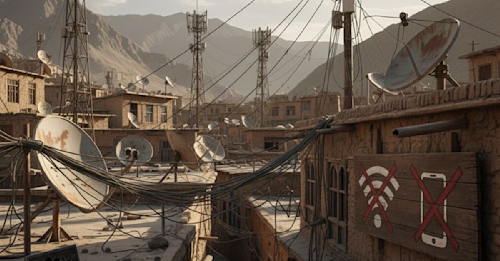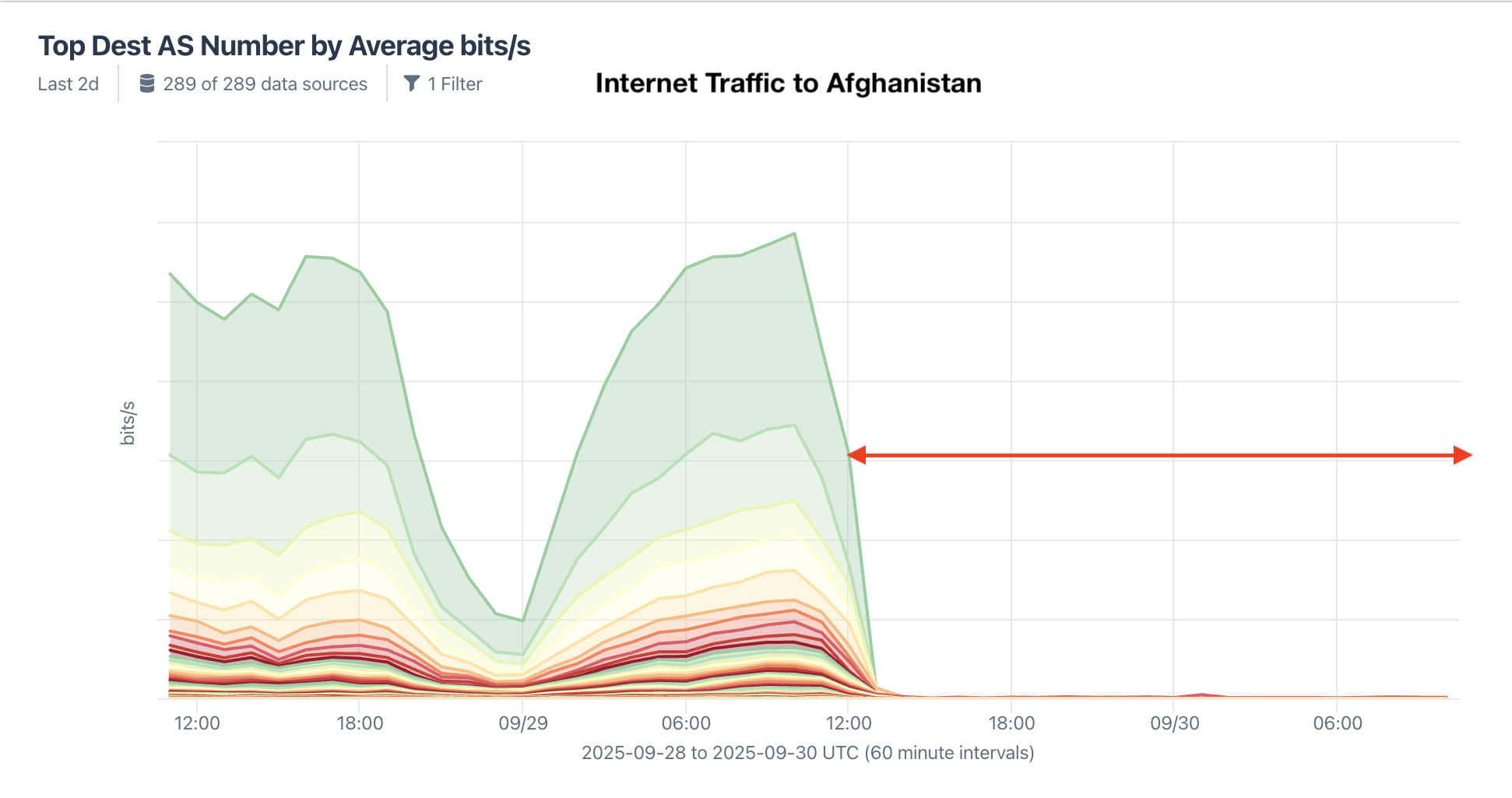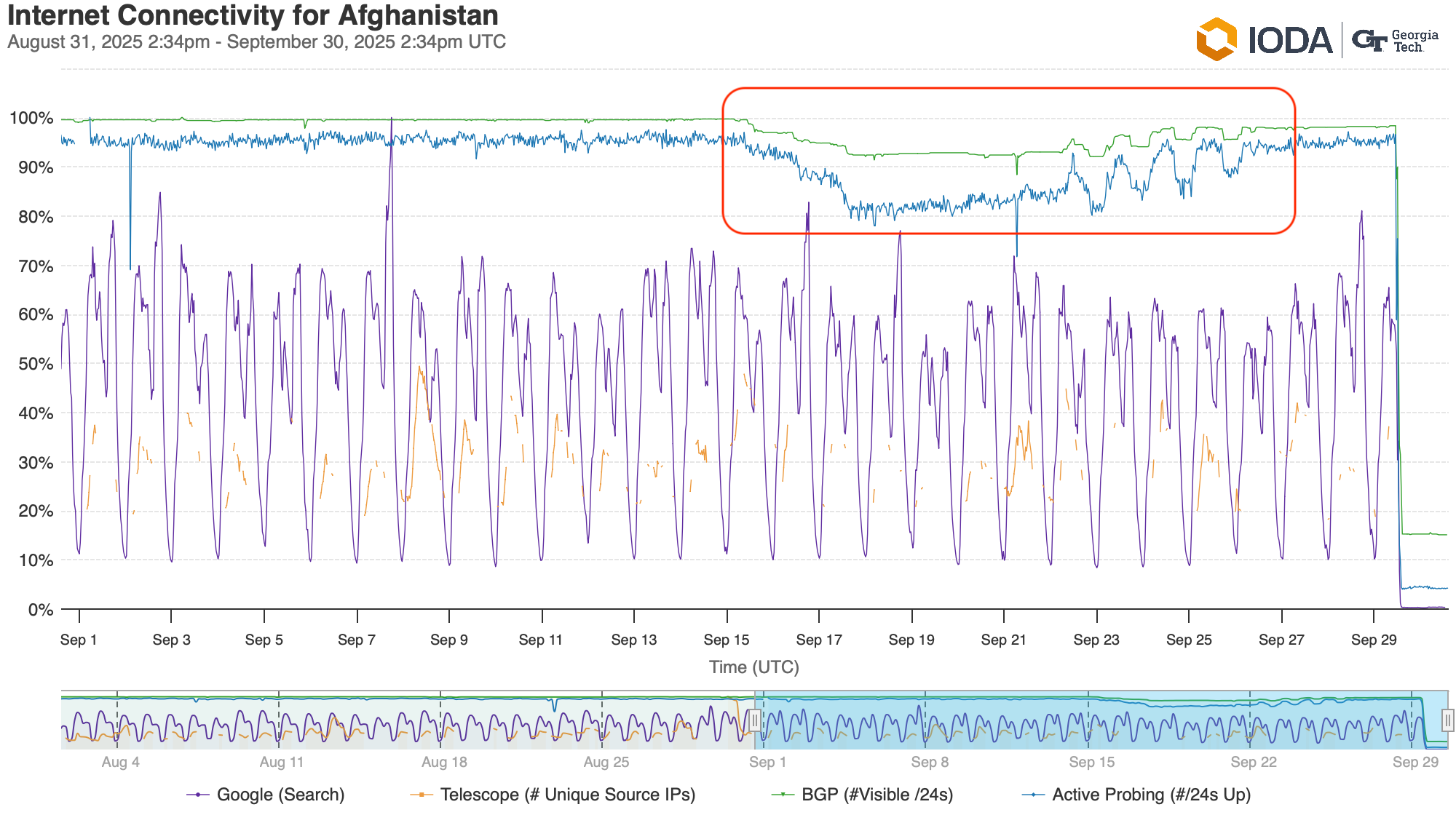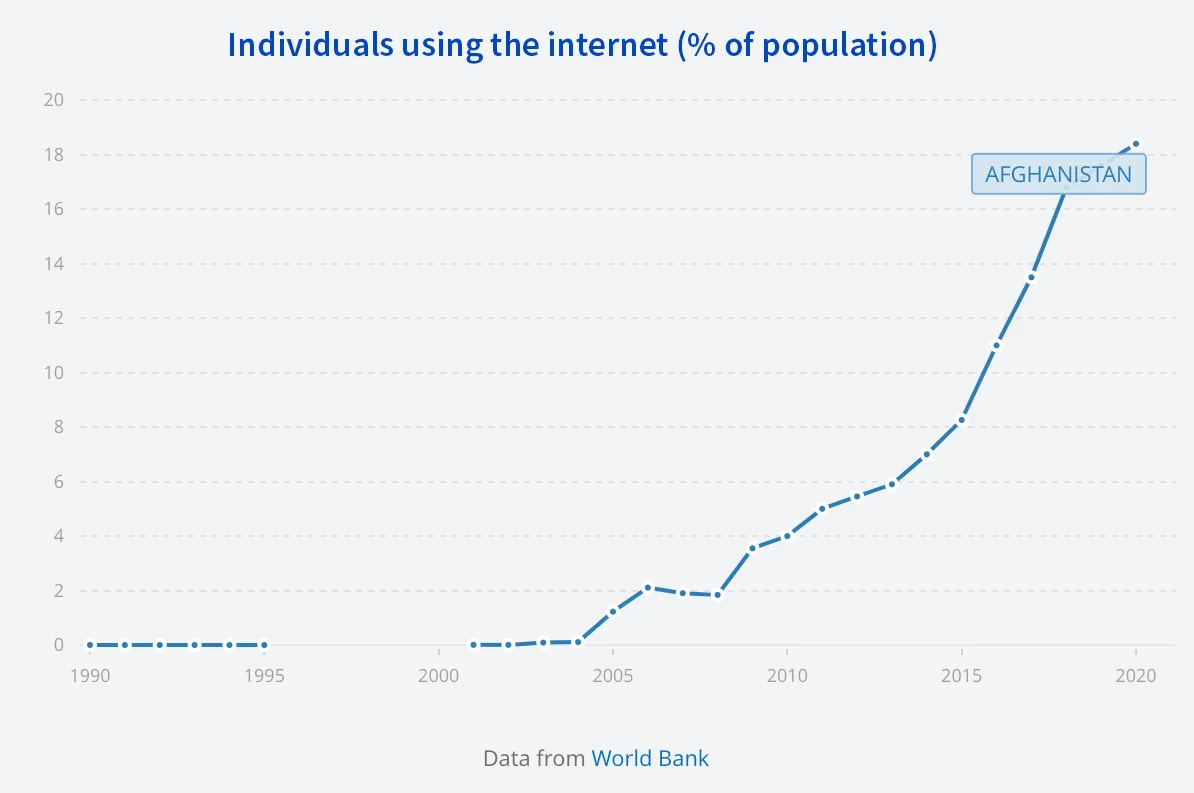Afghanistan Downs Internet to “Prevent Immorality”


Summary
Afghanistan has imposed its first nationwide internet shutdown, cutting off connectivity to “prevent immorality” — a blow to digital freedoms, education, and media already under severe strain since the Taliban’s 2021 return.
Beginning at 12:38 UTC (5:08pm local) on Monday, September 29, 2025, internet service across the country of Afghanistan was cutoff by order of the country’s Taliban government. It is the first-ever nationwide internet shutdown in the mountainous Central Asian country — service was banned in 2001, but no ISPs existed in country.
The latest measure was an expansion of an earlier regional blackout focused in more remote provinces of the country with the objective of “preventing immorality.” The immorality the Taliban is referring to is online education of women and girls — one of the many things that has been under threat since the return of Taliban rule in 2021.

The ongoing internet shutdown in Afghanistan is now rumored that it might last as long as 30 days and return only through 2G mobile service to restrict internet access.
Taliban Takeover in 2021
Following the US departure from Afghanistan in August 2021, after nearly 20 years of armed conflict, we published an analysis of the remarkable growth experienced by the country’s internet sector over the previous decade. Numerous companies had sprouted up, providing a variety of communication services — only some of which were tied to various US military and humanitarian efforts.
However, with the Taliban takeover came international sanctions and a departure of skilled technicians and foreign investment. As I summarized in my follow-up post last year, there was justified concern for the future of internet connectivity in Afghanistan:
- Would mobile and fixed-line internet services be disrupted or disconnected?
- Would international sanctions against the Taliban cripple the fledgling telecommunications sector?
- Would the departure of foreign investment lead to a degradation of service?
While the Taliban may aspire to a medieval version of society, the group that returned to power after 20 years included many younger adherents. These young men were accustomed to the conveniences of modern digital life: using WhatsApp for coordinating military movements and social media to push their worldview. There was hope that this newfound embrace of the internet might spare communications from a wholesale shutdown.
Since the takeover, there have been only subtle changes to the internet of Afghanistan. Those young Taliban fighters have become “bored of the day-to-day drudgery of running” the country with some finding themselves “spending all their time on Twitter.” Despite the international sanctions and the repressive rule, internet service had largely stayed up.
Local telecom engineers had even organized their first international conference, the inaugural Afghanistan Network Operators Group (AFNOG 1) was held on December 6, 2023. I was a speaker at AFNOG 2 the following year. AFNOG 3 had just taken place a few days ago.
Recent Shutdown in Northern Provinces
The shutdown fears of 2021 were realized earlier this month when the Taliban government banned internet service in remote provinces to restrict online education to women and girls, already banned from schools and universities.
Georgia Tech’s IODA captures the limited impact of the earlier shutdowns in northern provinces from a couple of weeks ago. In the screenshot below, subtle dips can be seen in BGP routes (green line) and active probing (blue line) beginning on September 15th. The IODA team published their analysis on the internet shutdown here.

The latest move expands the communications blackout to the entire country, including telephone service. Additionally, air travel in and out of the country has ceased.
Conclusion
The two decades leading up to the departure of the US military in August 2021 were another violent period in a country with many violent periods, but the stability that US involvement brought enabled many things, including girls and women to attend school, as well as the development of a small internet industry.
The graph below, from the World Bank, illustrates the meteoric rise in the number of Afghans connected to the internet and building a modern economy. “Over 80% of Afghanistan’s business transactions are conducted online,” according to recent coverage.

Data from the World Bank.
On the other hand, a report from earlier this year from the Afghanistan Media Support Organization (AMSO) stated that, “(t)oday, media professionals are enduring one of the bleakest periods in the country’s press history, as restrictions on journalistic activity intensify day by the day.” Over 500 cases of violence against journalists have been documented and at least 10 journalists are imprisoned for doing their jobs.
Many freedoms that people take for granted in the West were already under assault in Afghanistan prior to this week, but this shutdown begins a new, dark chapter of life in Afghanistan under Taliban rule.


